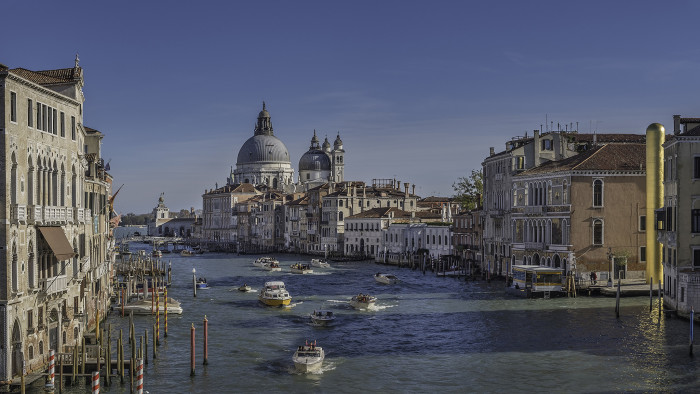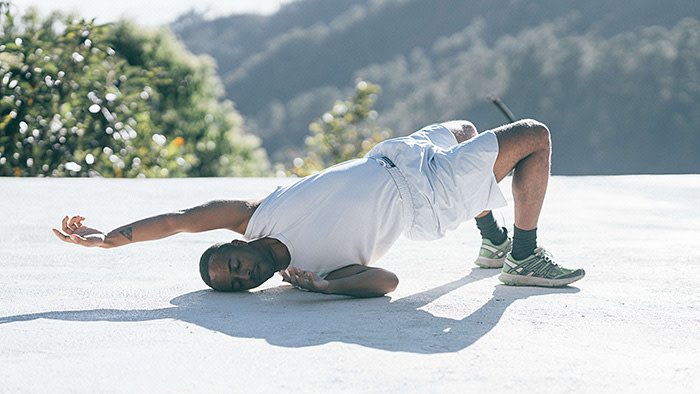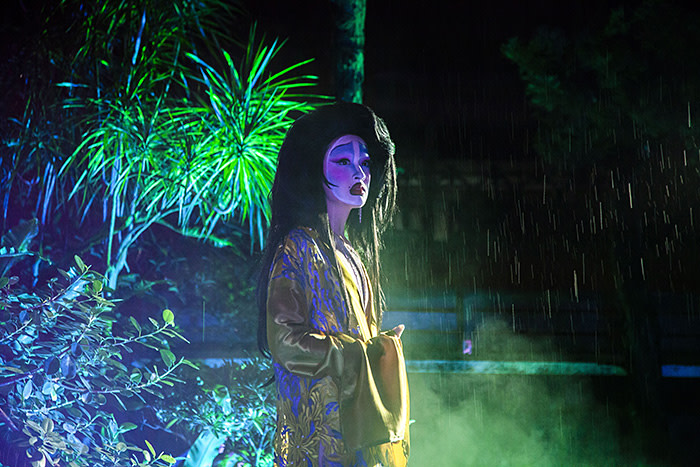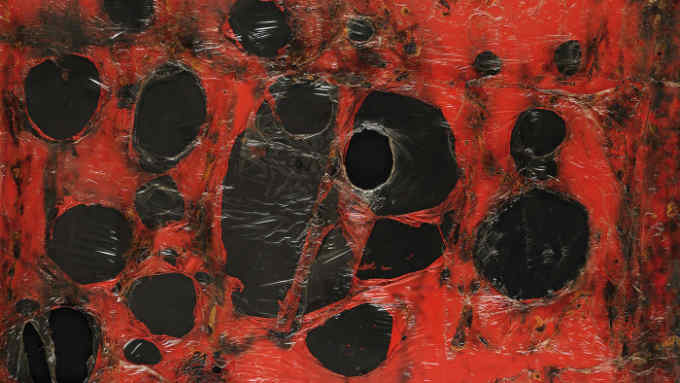Performance art comes to the Venice Biennale

Roula Khalaf, Editor of the FT, selects her favourite stories in this weekly newsletter.
Art events and shows will not be confined to the spectacular, historic Giardini and Arsenale venues at the 58th Venice Biennale. For the first time, an official programme of performance works will launch at the world’s oldest contemporary art show, bringing live art to the “in-between” spaces connecting the historic buildings of the lagoon city.
The new initiative has been co-devised by Ralph Rugoff, the Biennale’s artistic director this year, and Aaron Cezar, director of London’s Delfina Foundation, as part of the Biennale’s public programme (“Meetings on Art”). “There is such an incredible potential to animate the gardens and grounds to the Biennale, beyond the pavilions andcentral exhibition, to create different encounters,” Cezar says.
Fifteen performance works are scheduled to take place from May 8 to 12, and November 22 to 24. Cezar says the pieces selected explore the “politics that help form who we are”, looking at gender and nationality, among other issues. Artists selected for the opening week include Nástio Mosquito, Paul Maheke and Alex Baczynski-Jenkins, along with Florence Peake and Eve Stainton.
The latter pair will present a piece focused on the human body in relation to “ecological devastation” (“Apparition Apparition”, 2019) in the Teatro Piccolo Arsenale. Canadian artist Zadie Xa’s processional piece in the Giardini, “Grandmother Mago” (2019), explores fictional family histories while Maheke will present an existing work entitled “Seeking After the Fully Grown Dancer *deep within*” (2016-18) in the Giardino delle Vergini. “It’s a dance solo in which speech and improvised movements intertwine. I’m speaking to the audience while I’m performing a dance technique called ‘Authentic Movement’,” Maheke says.

This new crop of performance art works is a game-changer but there have been some important forerunners in the medium. Anne Imhof’s “Faust” — in which a group of moody millennials moved and writhed en masse — was a critical hit when it premiered at the German Pavilion during the 2017 Biennale (the entire piece featuring all performers took place across four weekends; reduced versions ran daily).
Another must-see was “An Immaterial Retrospective of the Venice Biennale”, conceived by Alexandra Pirici and Manuel Pelmus for the Romanian Pavilion in 2013. Works of art videos, sculptures and installations presented in the past 100 years of the Biennale were evoked through the “fragile bodies of a handful of people”, says pavilion curator Raluca Voinea.
Staging performance can be costly, Voinea says. “In a city like Venice, it becomes much more difficult to sustain a performance project for the entire duration of the exhibition,” she adds, describing how performer fees, water-bus tickets, accommodation and travel made the whole experience “pretty expensive” (the performers even doubled up as the pavilion stewards, acting as caretakers for the space).
“Not least, the Biennale has always been connected to a commercial circuit, and performance still doesn’t sell very well,” Voinea says, adding: “But the enormous exposure the works get there makes it worthwhile.”
Cezar also points out the ramifications of the under-developed market for performance art. Sponsors are therefore essential, he says, highlighting Arts Council England — the main commissioner of the performances with the Venice Biennale — as well as other supporters of “more risk-taking practices like performance” including the European Arteast Foundation in London and Inclusartiz Institute of Rio de Janeiro.
Eight different works will be staged during the opening week of “Meetings on Art” (the total number of performances will be 30). “To do this takes 23 artists plus a technical and project team of more than 20 people,” Cezar says (the full programme of “Meetings on Art” includes artist talks, readings and other events; Vivien Sansour and Bo Zheng are among the artists taking part during the closing weekend).
“The performance artists in ‘Meetings on Art’ are also supported by their galleries but these are smaller outfits who are taking a real risk on supporting production by younger artists with little market return. Without them, as well as public funding, biennials might only have artists represented by the larger galleries who can afford the risk,” Cezar comments.

There are other live art pieces scheduled to take place in Venice. Catherine Wood, senior curator, international art (performance) at Tate Modern is organising a new installation and performance piece entitled “Carousel” by the Argentine artist Pablo Bronstein. Commissioned by the OGR Torino contemporary art space, the work is modelled on a zootrope, a 19th-century animation device; “Carousel” will be shown during the first and last week of the Biennale at the Sala della Musica del Complesso dell’Ospedaletto.
Meanwhile, the organisers of Block Universe, a London-based performance art festival, are launching a project in Venice this year. For the piece, “Territorial Symphonies”, a brass band will play more than 60 national anthems in front of the Giardini entrance (May 8-10). The work, created by the Lithuanian artist Indre Serpytyte, ponders on the geopolitical pecking order of the 124-year-old Biennale (the anthems pertain to countries whose national pavilions lie outside the hallowed Giardini site).
“The logistics of organising live art in and around Venice are complicated for an independent organisation,” says Louise O’Kelly, co-founder of Block Universe, who adds that navigating Italian bureaucracy is tough. “It will be interesting to see what happens.”
Ultimately, there will be substantially more performance art this year in the nooks and crannies of La Serenissima. “What Ralph and I hope is that the performances will change one’s perception and memories of Venice,” Cezar says. “There is a lot to see in the Biennale and we want to slow down the rush; time stops after all when you experience good art.”
Follow @FTLifeArts on Twitter to find out about our latest stories first. Subscribe to FT Life on YouTube for the latest FT Weekend videos

Comments